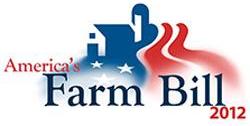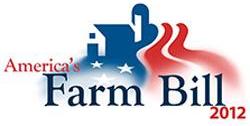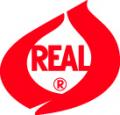The good news on this is both short-term, and especially, long-term. In the short run, beef markets bounced around, but ultimately shrugged off the impact of the discovery. In the long run, the news is that the system of deterrents we have in place to prevent the introduction and spread of mad cow continues to work. Even with extensive testing, we’re not finding a significant number of infected cows. The firewalls are holding. The effectiveness of these firewalls also demonstrates why a teaspoon of proactivity is worth many pounds of late-to-the-party responses, if and when things hit the fan.
The best example of this is the significant effort made in the U.S. to prevent a British-style breakout of mad cow disease. Keep in mind that the disease started in England in the 1980s when sheep were rendered and added to cattle feed. The sheep disease scrapie apparently crossed between species, and began to infect cows, causing BSE. And when humans ate the neurological tissues of BSE-infected cows, they started contracting a variant of Creutzfeldt-Jakob disease (CJD), an always-fatal neurological disorder that, in its normal form, strikes one in a million people.
So, starting in 1997, what regulators and industry did in America was to prevent the feeding of ruminant tissues to other ruminants. With NMPF’s strong backing, the USDA and FDA put a feed ban in place so that the potentially infectious materials in other mammals couldn’t be part of the diet of our beef and dairy animals. Eight years earlier, the U.S. had already banned the importation of ruminant animals and animal products from countries with cases of BSE; but the 1997 feed ban was crucial to proactively preventing an infectious disease from taking hold in the U.S.
The government also took two other crucial steps in 2004: first, it banned the inclusion of neurological tissues in the human food supply. Muscle cuts of meat don’t carry the infectious prions that cause BSE and CJD, only tissues like brains and spinal cords do. So, it was vital to protecting our food supply to keep those products out.
Second, the USDA also banned the processing of non-ambulatory, downer cows. Now, not all cows with BSE have been downers, and certainly the great majority of non-ambulatory cows are not infected with BSE. But because there is a theoretical correlation, NMPF endorsed the idea that to further shore up food safety, downers had to stay out of the meat supply.
The appearance of America’s first case of BSE in 2003 demonstrated both the need, and wisdom, of these approaches. That cow, a dairy animal discovered in Washington state, was born in Canada: a country that has had more cases of BSE than the U.S., likely because of tainted feed it imported from England. That imported animal had the typical form of BSE infection, identical to the hundreds of thousands of mad cows discovered in the U.K. in the 1980s and 1990s.
However, the three cases of BSE discovered in America since then: in Texas in 2005, in Alabama in 2006, and now this recent case in California – all have been infected with what’s called “atypical” BSE. While much is still unknown about prions and BSE, from all appearances, these three domestic animals all had BSE that occurred spontaneously, not because they ate infected feed. These may well be the bovine equivalents of the several hundred Americans who develop the traditional CJD disease each year.
However, there’s one other deterrence process where the U.S. has been a laggard: having a mandatory, national animal ID system. To its credit, our Canadian neighbors have a system that allows a traceback for cattle, like the one we imported that had BSE. In the dairy industry, we have internal record-keeping systems that allow for animal identification, which is why we know the history of the ten year-old cow found in Tulare, Calif. But that system is not mandatory. And there are gaps as a result.
In the case of the Texas cow found with BSE, the USDA was never able to fully trace its herd mates. The lack of a mandatory, national system is evidence that we need to remain proactive and keep pushing our legislators and regulators to move in that direction. Our good luck with mad cow disease isn’t just happenstance; it has happened because of the many steps, not all of them popular at the time, we have taken. But more is still needed.

 WASHINGTON, DC – The Senate Agriculture Committee today approved a farm bill draft that contains critically-needed improvements in dairy programs, according to the National Milk Producers Federation (NMPF). The bill passed by a vote of 16 to 5, and now will proceed to the full Senate for consideration.
WASHINGTON, DC – The Senate Agriculture Committee today approved a farm bill draft that contains critically-needed improvements in dairy programs, according to the National Milk Producers Federation (NMPF). The bill passed by a vote of 16 to 5, and now will proceed to the full Senate for consideration. ARLINGTON, VA – The draft farm bill language released this afternoon by the Senate Agriculture Committee includes the key components of the Foundation for the Future dairy policy reform developed by National Milk Producers Federation (NMPF) nearly two years ago. The dairy legislation begins at Section 1401 (page 68) in Title 1 – Subtitle D and goes through Section 1481 (page 111).
ARLINGTON, VA – The draft farm bill language released this afternoon by the Senate Agriculture Committee includes the key components of the Foundation for the Future dairy policy reform developed by National Milk Producers Federation (NMPF) nearly two years ago. The dairy legislation begins at Section 1401 (page 68) in Title 1 – Subtitle D and goes through Section 1481 (page 111).





